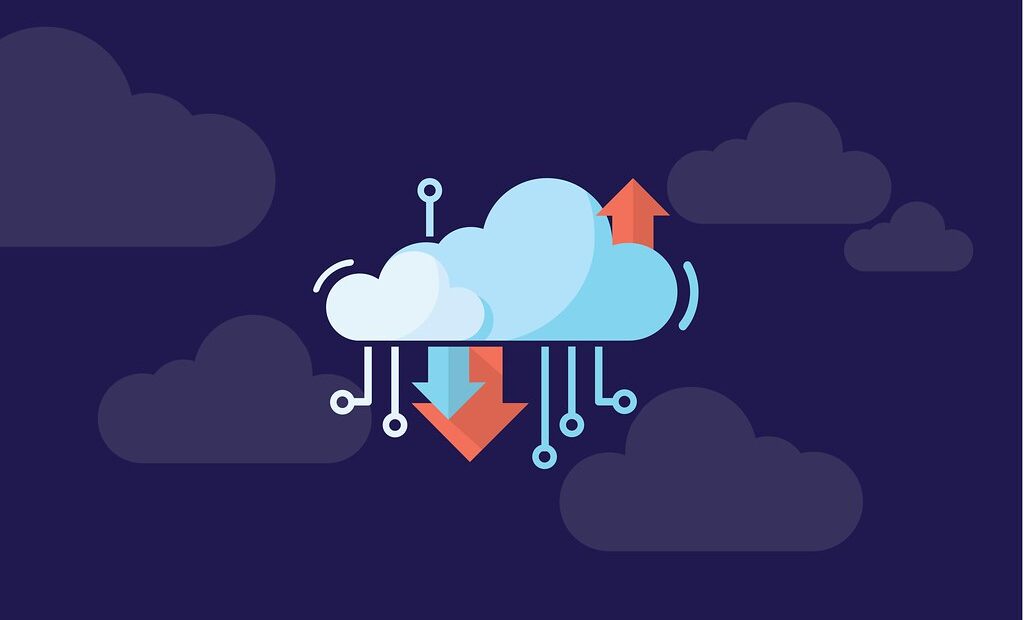Not all clouds are the same. There are different ways to deliver cloud services. How exactly do the different models ultimately differ?
Simply put, cloud computing is the delivery of computing services—including servers, storage, databases, networking, software, analytics, and intelligence—over the Internet (“the cloud”) to offer faster innovation, flexible resources, and economies of scale. You typically pay only for cloud services you use, helping you lower your operating costs, run your infrastructure more efficiently, and scale as your business needs change.
Public Cloud
The public cloud or public cloud is freely available to everyone over the Internet. The services are provided by an external company. The three largest public cloud providers include Amazon Web Services (AWS), Microsoft Azure and Google Cloud Platform. Customers can take advantage of services such as computing power, infrastructure, storage space, applications and much more from the various providers.
The choice of available services is constantly increasing. Among the biggest advantages of the public cloud are low costs, as services are usually billed based on usage, personnel costs are reduced, as operation and maintenance of IT resources become obsolete, and there are no investment costs for server hardware. Furthermore, it offers high scalability and a wide range of available services. It can be set up particularly quickly to meet requirements. If more storage space than originally planned is required, the organisation can easily add additional storage.
Public Cloud at a glance
- Can be set up quickly according to requirements
- Represents the most cost-effective of the three types of cloud
- No control over the physical servers
Private Cloud
The Private Cloud makes its cloud computing resources available exclusively to organisations. Unlike the public cloud, it is not accessible to the general public. The private cloud can, for example, be located in a company’s local data center or be hosted by third parties from certain cloud services. It provides a high level of control and security due to private servers and is therefore often used by financial institutions, government agencies or other medium to large organisations with business-critical operations.
One of the advantages of using the private cloud is its adaptability, as the organisation can customise its cloud environment to meet specific business needs. Computer, storage and network capacities are adapted to the internal needs of the organisation and are not subject to the restrictions of the public cloud. On the other hand, the private cloud offers separate control and security, as this form of cloud computing does not have to be shared with other users.
Disadvantages could, however, represent higher costs, as the private cloud is the most expensive of the cloud types. The use of a private cloud results in comparable personnel, administration and maintenance costs as those of operating conventional data centres. A cost reduction as with the use of a public cloud is not so easily possible. In addition, using a private cloud involves a considerable amount of administrative work, since the internal IT department of the organisation has to bear the responsibility and effort of managing the private cloud. External solutions from third-party providers are usually more cost-intensive than using a public cloud.
Private Cloud at a glance
- Ensures security and control of sensitive data through private servers.
- Is in comparison the most cost-intensive of the cloud types.
- Is less fast and flexible in adaptation.
Private Cloud vs. Public Cloud
The two forms of cloud computing differ in a number of significant respects: The services of the public cloud are available to everyone: Although the individual users here also act independently of each other, they all use the same pool of resources. The private cloud grants only authorised users access to the cloud services. The resources are therefore not shared by several users. Furthermore, computer, storage and network capacities in a private cloud can be adapted to the individual needs of the organisation. A public cloud cannot usually be adapted so precisely to the individual customer – compared to the private cloud.
Nevertheless, the public cloud also offers some decisive advantages:
Advantages of the Public Cloud
- Cost savings: reduced personnel costs as operation and maintenance of IT resources become obsolete; no investment costs for server hardware; payment based on actual consumption
- Low administrative effort: Professional security management by the respective provider, upgrades are also installed by the provider
- Concentration on the core business
- Flexibility: The public cloud is not tied to a specific location and therefore accessible from anywhere via the public Internet
- High scalability: With the global AWS infrastructure, enterprises can be extremely flexible and take advantage of the conceptual infinite scalability of the cloud.
Hybrid Cloud
The so-called hybrid cloud combines the advantages of both the private and public clouds together in one cloud model. Some of the organisation’s data is located in a public cloud and others in a private cloud. Thus, the hybrid cloud offers a comparably high level of flexibility and the often lower costs of the public cloud, but also meets the increased security and data protection needs in organisations, as certain services can only be used internally, as in a private cloud.
Organisations therefore benefit from cost savings, maintain their flexibility and are able to store sensitive data securely in the internal area. In the Hybrid Cloud, users can switch between cloud types at any time without being affected by them while working.
Hybrid Cloud at a glance
- Combines the increased security of the private cloud with cost savings and flexibility of the public cloud
- Lies in the midfield in terms of price
- Is created both on private, very secure and public servers
Much of the information provided in the article was sourced from www.cloud-consulting.eu, http://searchcloudcomputing.techtarget.com, http://azure.microsoft.com, http://newsroom.cisco.com













